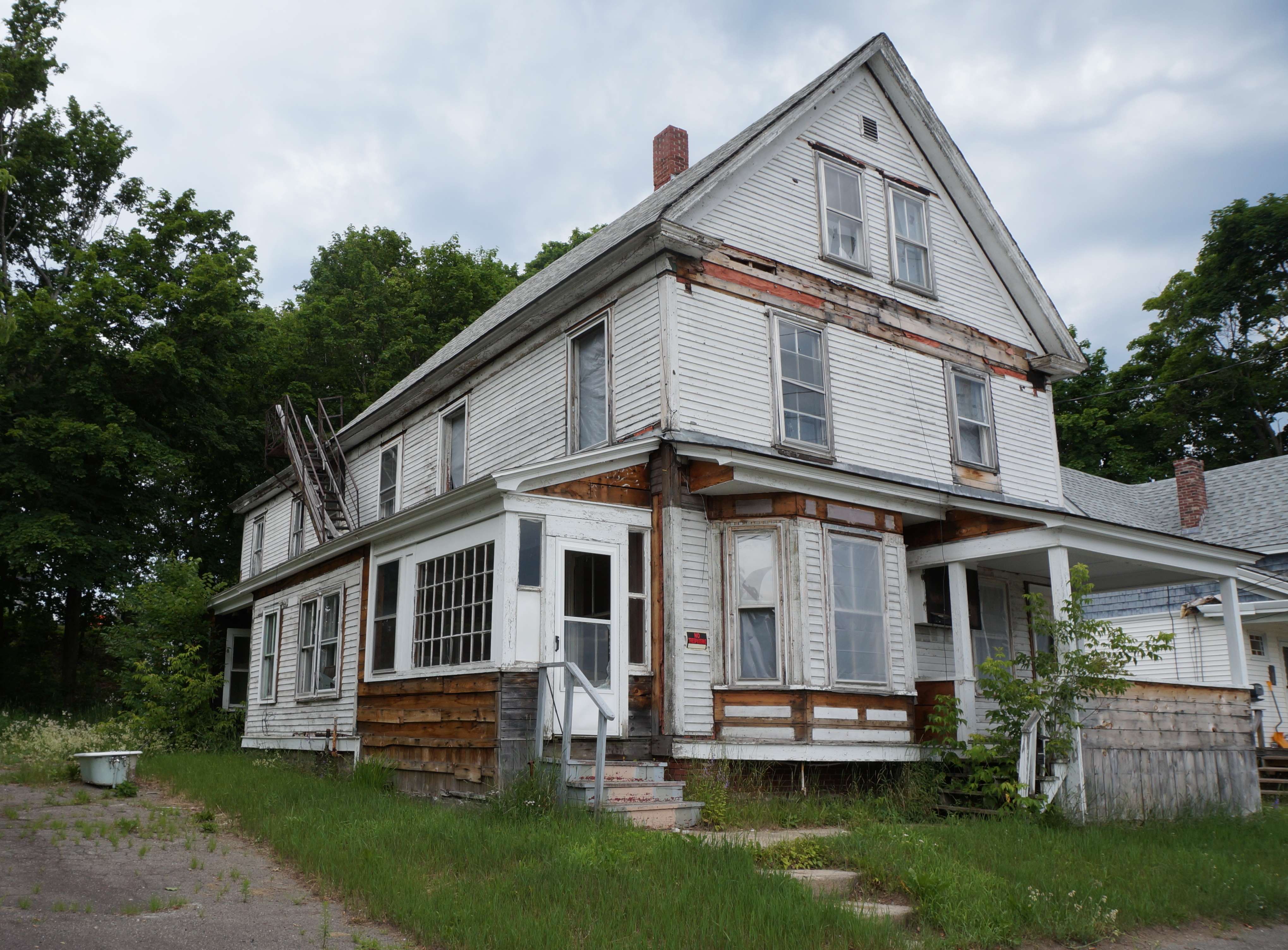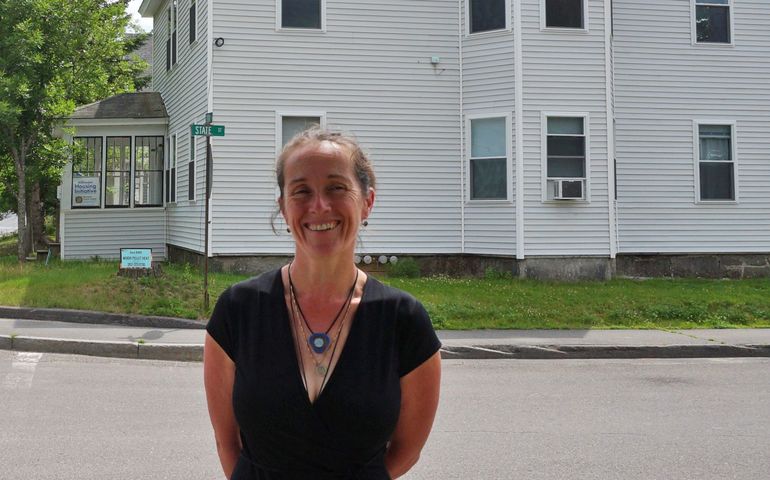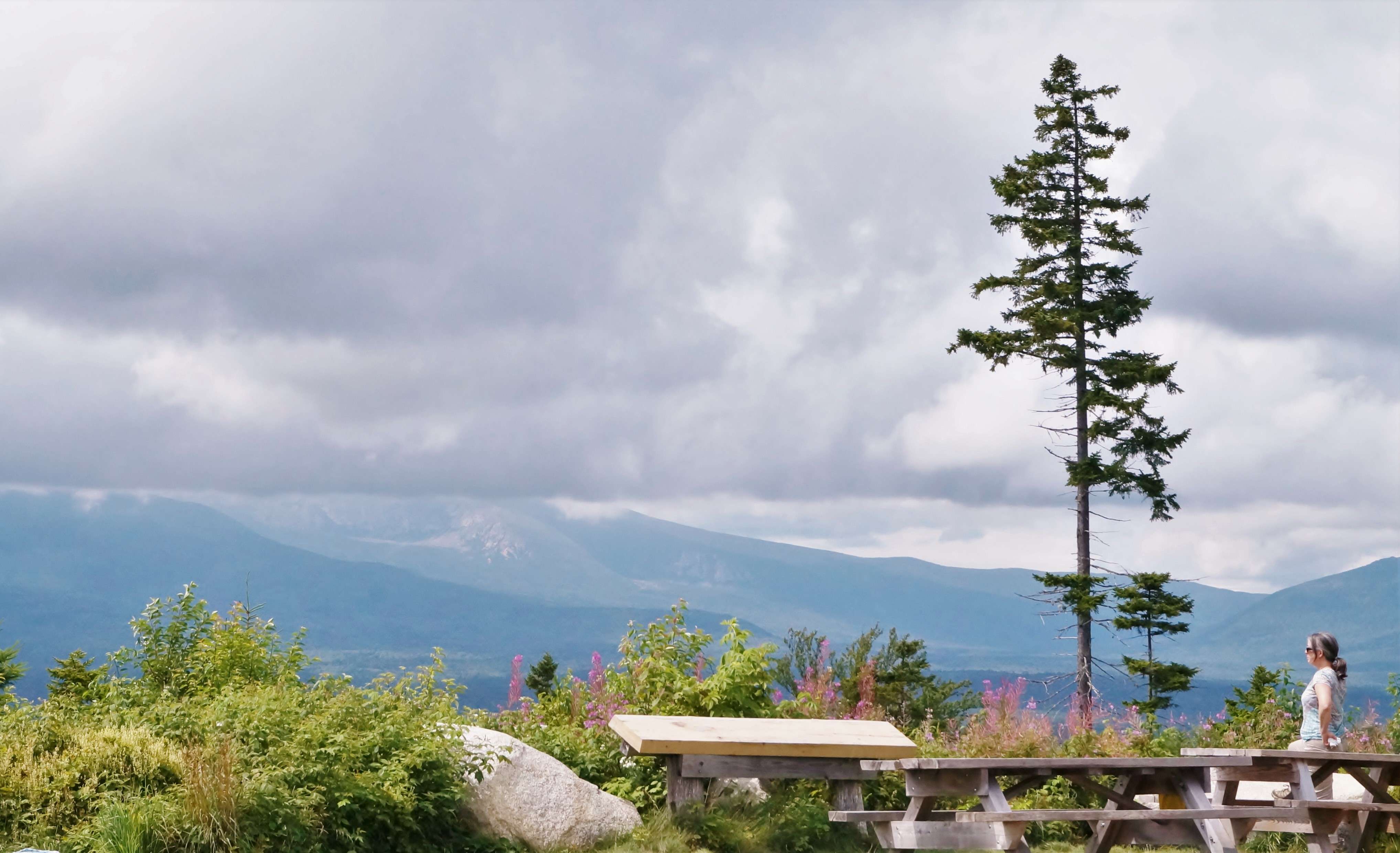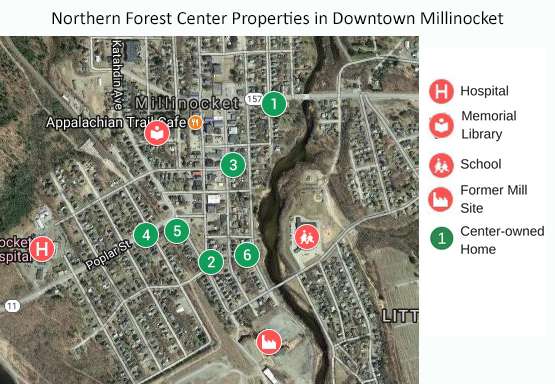
Millinocket Housing Initiative seen as catalyst for healing housing market
 Photo / Maureen Milliken
Ailish Keating, project manager for the Millinocket Housing Initiative, stands in front of 26 Central St. in Millinocket, one of six properties Northern Forest Center has renovated or is renovating in Millinocket.
Photo / Maureen Milliken
Ailish Keating, project manager for the Millinocket Housing Initiative, stands in front of 26 Central St. in Millinocket, one of six properties Northern Forest Center has renovated or is renovating in Millinocket.
The Northern Forest Center started the Millinocket Housing Initiative with the simple goal of renovating 10 of the town's distressed houses to both provide workforce housing and help boost the economy.
Two years later, the program is showing results, and is one of several drivers of an economic turnaround in the former mill town.
The housing initiative, which focused on visible buildings in the town's downtown core, has renovated five residential properties with another one under renovation.
The completed single-family homes and multi-families all have tenants in them, many of them new to the area. Ailish Keating, project manager of the initiative, said that was part of the goal — to provide quality workforce rental housing, particularly for people new to Millinocket.
But a bigger goal has also been met — changing perceptions. The program made sure the housing it chose — some of it vacant, all for sale by owners — was visible to the community.
"What has changed is the perception of downtown," she said in a presentation that was part of Tuesday's 2019 MaineHousing Affordable Housing Conference, in Augusta. "All of the sudden you get some local people saying, 'Hey, I'll snag that house before they get it.'"
With house prices still low in town — the median sold price in 2018 is $51,250, up from $25,000 in 2014 — it's affordable for contractors and individuals who want to buy and renovate a house.
"They want to get there before we do, and that's great, that's the point," she said.

Trying something new
The program was launched in October 2017, as a way to provide workforce housing, particularly for 250-employee Millinocket Regional Hospital, which is a block from downtown.
New Hampshire-based Northern Forest Center is involved in dozens of programs designed to create jobs and leverage development in northern New England and New York, but the Millinocket Housing Initiative was a first for it, Mike Wilson, a senior program director, told Mainebiz at the time.
He said they hope it can become a model for similar programs, and Keating said Tuesday other communities have asked her about it.
The program raised $1 million to renovate the houses. Keating said it cost from $20,000 to $250,000 to renovate the buildings, with the one at 100 Katahdin Ave. that's now under renovation being the biggest job.
The completed houses include a two-family apartment house, a three-family apartment house, and two-bedroom, three-bedroom and four-bedroom single-family homes.
She said it'll take likely 15 months and as much as $300,000 to renovate the 3,400-square-foot, three-story building that once had five apartments. Built in 1901, it was long vacant and in rough shape when the program bought it for $5,500 in the summer of 2018.
Northern Forest Center's principles of energy efficiency were also part of the project — three have wood pellet boilers, and one has a wood pellet stove.
Rents range from $460 for a one-bedroom apartment with heat included to $900 for a four-bedroom house.

Ripple effect
The housing initiative is just one of several factors that have brought people to town and boosted the economy, Keating said.
Millinocket had housing for about 7,800 people, but has a population of 4,200, a result of the Great Northern Paper mill closing in 2008. The town was built around the mill, which was the only major industry.
But since late 2015, there have been changes, including the launch of the Millinocket Marathon, which began that December as an informal run with about 50 people. Some 2,600 runners registered for last year's marathon and half marathon.
New library director Matt Delaney moved to Millinocket from upstate New York in 2016 to take the job, and has revitalized the library, which briefly closed in 2015 because of lack of money and was reopened by volunteers. It's now undergoing a $1.5 million renovation.
The designation of Katahdin Woods and Waters as a national monument was another big step. "That put a spotlight on Millinocket," Keating said. "It validated Millinocket as a place that has a future."
The former Great Northern Mill site was bought by the nonprofit Our Katahdin in 2017, and earlier this year a $1.5 million tax lien inherited from the previous owners was resolved. The resolution leveraged a $5.3 million Economic Development Administration grant to develop the site that had been on hold since last year, as well as $4 million more in grants.
There is no one big thing that's bringing the town back, but "everyone's moving the mark a little," Keating said.
The effect on the housing market has been profound:
- Median sold price went from $25,000 in 2014, to $55,000 in 2018, leveling off at $51,250 so far this year;
- Days on the market has gone from 144 in 2014; a low of 57 last year and 67 so far this year;
- Sales volume was $1.1 million in 2014; a high of $3.8 million in 2018 and $1.8 million this year;
- Number of units sold was 33 in 2014, a high of 63 in 2017, 58 last year and 32 so far this year.
Keating said house sales have slowed from last year — something that could be expected given the age of the housing stock and the fact that the population hasn't increased substantially.

Focus on what's next
The aim with both residential and and commercial buildings is that they eventually be sold. The Northern Forest Center isn't looking to make a profit, but to help investors recoup their investment, Keating said. Investors "want to recap their assets at a future time, but do good in the meantime," she said.
They will eventually be sold to those who would add to the town's economic fabric, by living and working there, and tenants are encouraged to become eventual owners, if they want to. The timeframe from renovation to sell was originally 36 months, but Keating said that's been extended.
When the program began, Wilson said they'd learn as they went. Keating said they ran into a difficulty in getting contractors, a statewide issue; they underestimated costs and and time for some projects; and there were unforeseen issues with homes, like mold or the need for a new roof.
Keating said Tuesday that with the program's success, "Our focus is on what needs to happen next." The program is turning its attention to vacant commercial buildings in the downtown corridor.
While the marathon brings people in for a few days, and the national monument attracts new visitors, how the town is viewed by those from outside, as well as area residents, is the biggest outcome out come for all the new things happening in the region, she said. That goes for the housing program, too.
"We wanted to make Millinocket an accessible location, and it was important that people see the changes," she said. Now it's become a place where people see possibilities.
"If there's any impact of the renovations, that's the biggest one," she said.










0 Comments